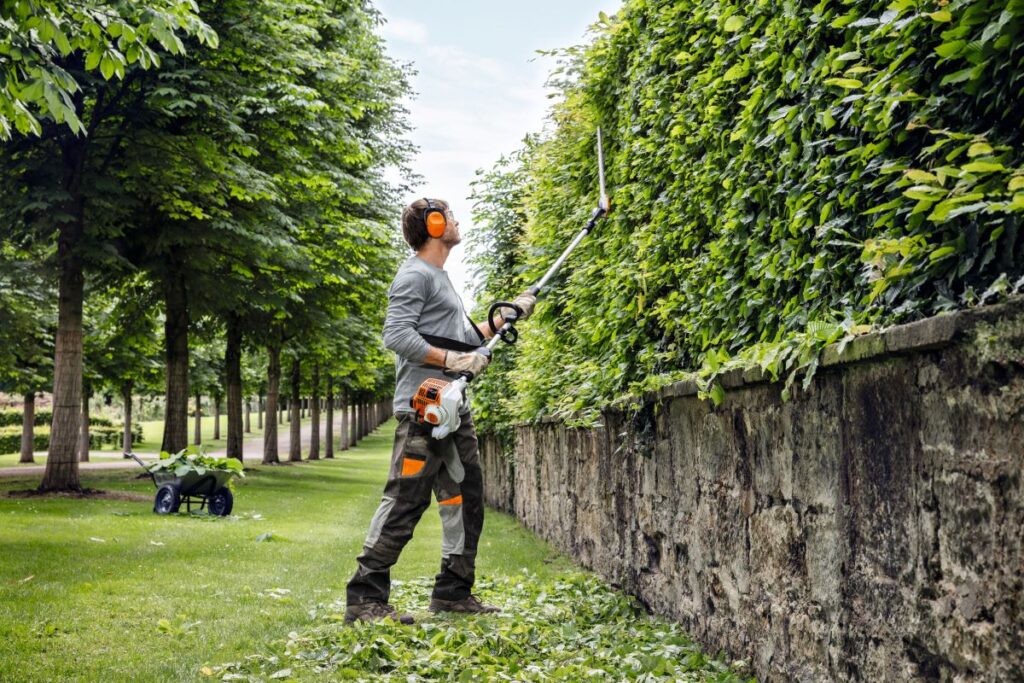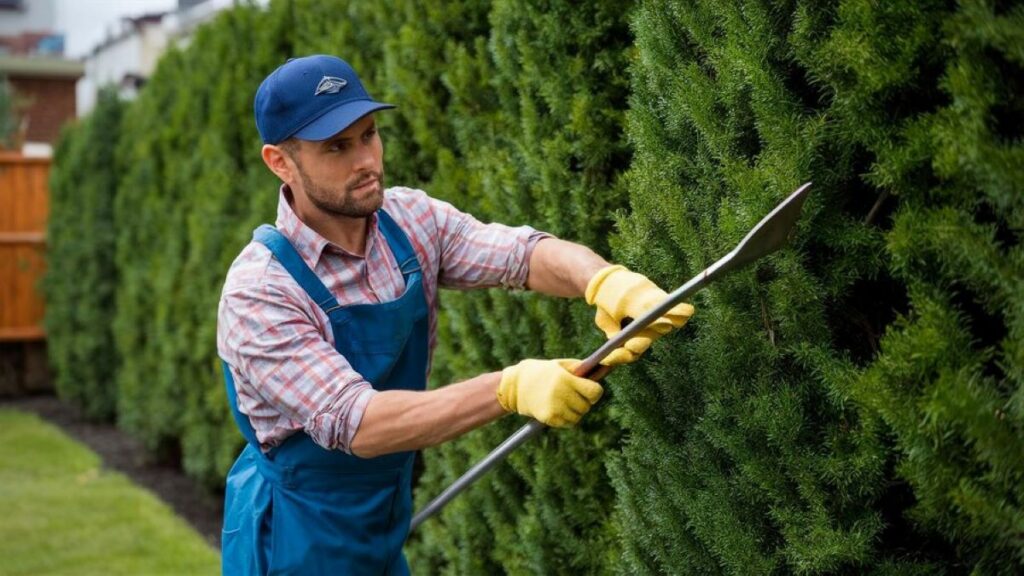Maintaining a well-groomed garden is essential for enhancing the overall aesthetic of any property. Among the various elements that contribute to a polished appearance, hedges play a pivotal role. Not only do they provide privacy and define boundaries, but they also serve as a canvas for creativity through various shaping techniques. This article explores effective hedge shaping techniques that can transform your outdoor space into a refined oasis.
The Importance of Hedge Shaping
Hedge shaping is not merely about aesthetics; it also contributes to the health and longevity of the plants. Properly shaped hedges encourage growth, improve air circulation, and allow sunlight to penetrate the foliage. Moreover, well-maintained hedges can significantly increase the value of a property, making it more appealing to potential buyers.
Enhancing Aesthetics
One of the primary reasons for shaping hedges is to enhance the visual appeal of your garden. A neatly trimmed hedge can serve as a stunning backdrop for colourful flowers or a well-manicured lawn. Different shapes, such as geometric forms or naturalistic styles, can complement the architecture of your home and create a cohesive landscape design. Additionally, the choice of plant species can further elevate the aesthetic quality; for instance, using flowering hedges like lavender or hydrangeas can add seasonal colour and fragrance, enriching the sensory experience of your outdoor space.
Promoting Plant Health
Beyond aesthetics, shaping hedges plays a crucial role in promoting plant health. Regular trimming helps to remove dead or diseased branches, allowing the plant to focus its energy on new growth. This practice not only strengthens the hedge but also prevents overcrowding, which can lead to pests and diseases. Furthermore, shaping can encourage a denser growth habit, which not only enhances the visual appeal but also provides better shelter for beneficial wildlife, such as birds and beneficial insects. By fostering a healthy ecosystem within your garden, you can create a vibrant habitat that supports biodiversity and contributes to the overall resilience of your landscape.
Common Hedge Shaping Techniques
There are several techniques that gardeners and landscapers employ to shape hedges effectively. Each method has its unique benefits and can be tailored to suit various hedge types and desired outcomes.
Topiary
Topiary is an art form that involves shaping hedges into specific forms, such as animals, geometric shapes, or abstract designs. This technique requires skill and patience, as it often involves meticulous trimming over time. Topiary can add a whimsical touch to gardens and is particularly popular in formal settings.
For those looking to create a topiary masterpiece, it is essential to choose the right plant species. Boxwood, yew, and holly are commonly used due to their dense foliage and ability to withstand heavy pruning. Regular maintenance is crucial to keep the shapes defined and prevent overgrowth. Moreover, the timing of pruning is vital; late spring or early summer is often recommended, as this allows for new growth to fill in any gaps and enhances the overall appearance of the topiary.
In addition to traditional shapes, contemporary topiary has seen a rise in popularity, with gardeners experimenting with more abstract forms and even incorporating lighting to highlight their creations at night. This modern twist not only showcases the gardener’s creativity but also transforms the garden into a dynamic space that evolves with the seasons. Visit https://www.flowerpower.com.au/garden-advice/gardening/all-about-topiary/?srsltid=AfmBOorSW3IDy6lrd3zzOfl5ifQvh-FunAntNxzT_2wLOrMNpN3gjD4E to get more about tapiary.
Layering
Layering is a technique that involves creating different heights within a hedge to add depth and visual interest. This method is particularly effective for larger hedges, where varying the height can create a more natural appearance. By carefully selecting plants of different sizes, a layered hedge can mimic the look of a natural woodland.
To achieve this effect, start with taller plants at the back and gradually decrease the height towards the front. This not only enhances the visual appeal but also ensures that all plants receive adequate sunlight. Regular trimming will help maintain the desired shape and prevent any one layer from overpowering the others. Additionally, layering can be complemented by incorporating flowering plants or evergreens, which can provide seasonal colour and texture, enriching the overall aesthetic of the hedge.
Furthermore, layering can also serve practical purposes, such as providing shelter for wildlife. A well-structured hedge can become a habitat for various birds and beneficial insects, contributing to the biodiversity of the garden. By considering the ecological impact of hedge design, gardeners can create not only visually stunning landscapes but also sustainable environments that support local wildlife. This thoughtful approach to layering can transform a simple hedge into a vibrant ecosystem, enhancing both its beauty and functionality.

Tools for Hedge Shaping
Having the right tools is essential for effective hedge shaping. The right equipment not only makes the job easier but also ensures a clean and precise cut, which is vital for plant health.
Pruning Shears
Pruning shears are a fundamental tool for shaping hedges. They come in various sizes, from handheld models for small hedges to larger versions for more extensive work. Sharp blades are essential for making clean cuts, which reduce the risk of damaging the plant.
When using pruning shears, it is important to cut at an angle to promote healing and prevent water from pooling on the cut surface. Regular cleaning and sharpening of the blades will ensure optimal performance and longevity of the tool.
Hedge Trimmers
For larger hedges, hedge trimmers can save significant time and effort. These tools come in both manual and electric varieties, with electric models offering the advantage of speed and efficiency. When using a hedge trimmer, it is vital to maintain a steady hand and follow the natural shape of the hedge to avoid creating an unnatural appearance.
Safety should also be a priority when using hedge trimmers. Wearing protective gear, such as gloves and goggles, will help prevent injuries while working. Additionally, ensuring that the area is clear of debris will reduce the risk of accidents.
Seasonal Considerations for Hedge Shaping
Timing is crucial when it comes to shaping hedges. Different seasons offer unique opportunities for pruning and shaping, and understanding these can lead to healthier and more attractive plants.
Spring Pruning
Spring is an ideal time for shaping hedges, as most plants are just beginning to emerge from dormancy. This is the perfect moment to assess the overall shape and remove any dead or damaged branches. Pruning in spring encourages new growth and allows the hedge to fill out during the growing season.
However, it is important to avoid heavy pruning in early spring, particularly for flowering hedges, as this could remove buds that would otherwise produce blooms later in the season. A light trim to shape the hedge is usually sufficient at this time.
Summer Maintenance
During the summer months, regular maintenance is key to keeping hedges looking their best. This involves monitoring growth and performing light trims as needed. Summer is also a good time to assess the health of the plants and address any pest issues that may arise.
For hedges that bloom in summer, it is advisable to wait until after flowering to perform any significant pruning. This ensures that the blooms are not sacrificed for the sake of shape. Click here to get what’s the cost of hedge trimming in sydney?
Creating a Maintenance Schedule
Establishing a maintenance schedule for hedge shaping is essential for achieving long-term results. Regular attention will prevent overgrowth and ensure that hedges remain healthy and visually appealing.
Frequency of Trimming
The frequency of trimming will depend on the type of hedge and its growth rate. Fast-growing species may require trimming every few weeks during the growing season, while slower-growing varieties may only need attention a couple of times a year. Keeping a close eye on the growth will help determine the best schedule for each hedge.
Seasonal Checks
In addition to regular trimming, seasonal checks are vital for maintaining hedge health. Inspecting for pests, diseases, and signs of stress will allow for timely intervention. Addressing these issues early can prevent more significant problems down the line and ensure that hedges continue to thrive.

Conclusion
Hedge shaping is an essential aspect of garden maintenance that can significantly enhance the appearance of a property. By employing various techniques, utilising the right tools, and adhering to a maintenance schedule, anyone can achieve a polished and professional look for their outdoor space. Whether opting for topiary, layering, or simply keeping hedges neatly trimmed, the effort invested in shaping hedges will undoubtedly pay off in the form of a beautiful and inviting garden.
Ultimately, a well-maintained hedge not only elevates the aesthetic appeal of a property but also contributes to the overall health of the garden. With the right approach and dedication, creating a stunning outdoor space is within reach for every homeowner.
